This article comes courtesy of @_perpe_ (his charts on Twitter in Spanish) and was published here on February 7th, 2013The economy in Spain is going through one of the most difficult moments in its recent history. The terrible crisis that began five years ago is causing very worrying job losses and business closures that will be difficult to recover in the medium term. The austerity measures taken by the government have not had a positive effect on growth so far. At this point, it seems necessary to establish additional structural reforms in order to achieve higher economic dynamism.In this article, I provide an overview of the evolution of several economic indicators since the beginning of the 21st century from the 12 charts shown below. It is not my intention to exhibit pessimistic data. Instead, the aim should be to analyse the situation in a realistic way to set the foundations for the development of the country in the near future.Spanish economic growth, which had almost doubled in nine years, began to stagnate in the last quarter of 2008. Despite the slight increase in 2010, this year’s GDP is expected to contract again by 1.5%, according to analyst estimates.
Chart 1. Gross Domestic Product
The latest Labour Force Survey showed again the toughest part of the crisis. In the third quarter of 2007, there were 1.76 million unemployed in Spain. Today this number is close to 6 million, with the unemployment rate reaching the 26.02%. Among people under 25 years the country also holds the highest unemployment rate among Eurozone countries, with 55.13% of them without a job.
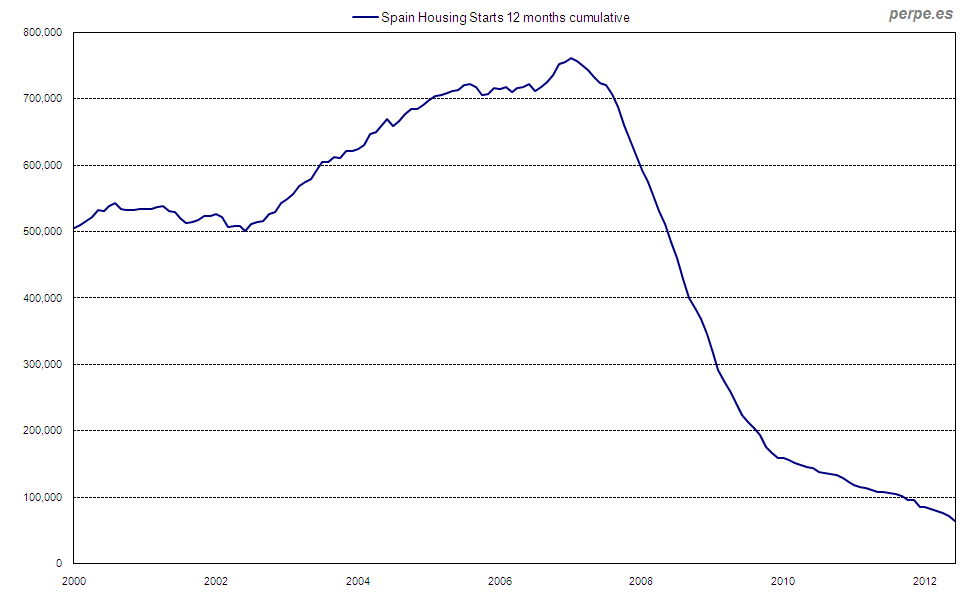 Chart 3. Housing starts
Chart 3. Housing startsWithout doubt, this excess of supply translated into housing price declines, further eroding the wealth of Spanish households. Property that cost about 840 euros per square meter at the beginning of 2000, increased by more than two and a half times at its peak in March 2008. Since then, the cumulative drop has been 27%.
Chart 4. House price
The double impact of unemployment and falling house prices led to a historically high delinquency rate of 11.4%. Exactly six years ago, the rate had set a record low of 0.7%.
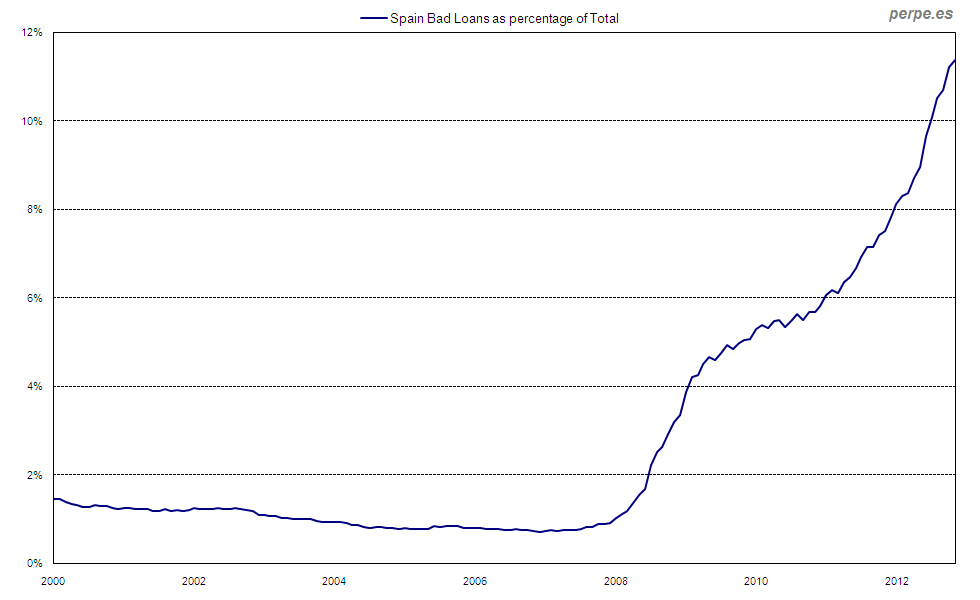
Chart 5. Bad loans as percentage of total
There is no doubt that the household saving has suffered considerably. Moreover, in some particular moments, the fear of a possible breakup of the euro led to withdrawals of bank deposits. Although not as dramatic, since December 2010, cash outflows have been about 82,000 million euros.
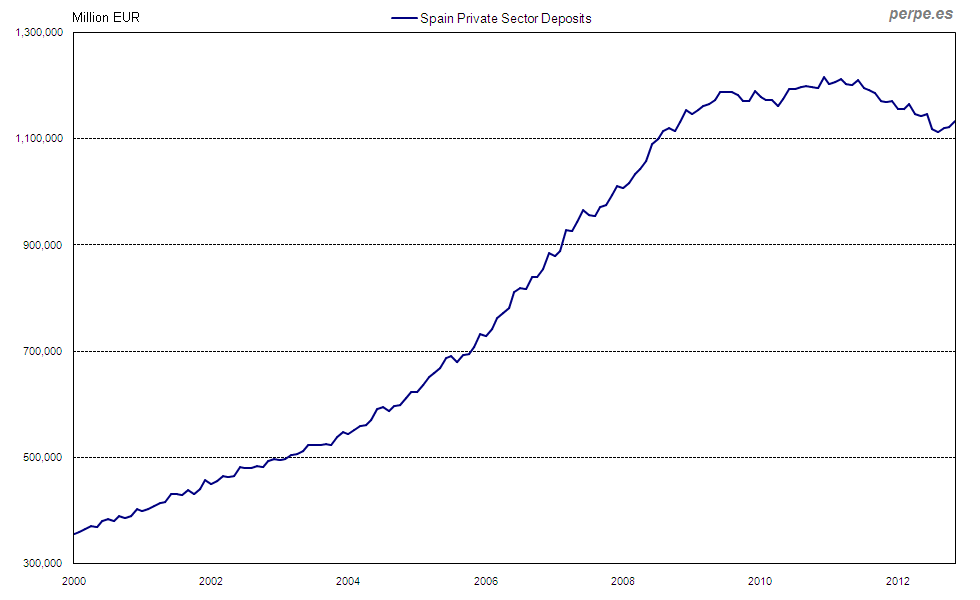
Chart 6. Private sector deposits
What is really concerning is the capital flight out of Spain as measured by the financial account of the balance of payments, excluding the Bank of Spain. This account includes the purchase and sale of financial assets and liabilities between residents and the rest of the world. Although in the last two months there has been a positive change, the yearly cumulative balance as of the middle of last year showed more than 330,000 million euros in outflows, representing around 31% of GDP.
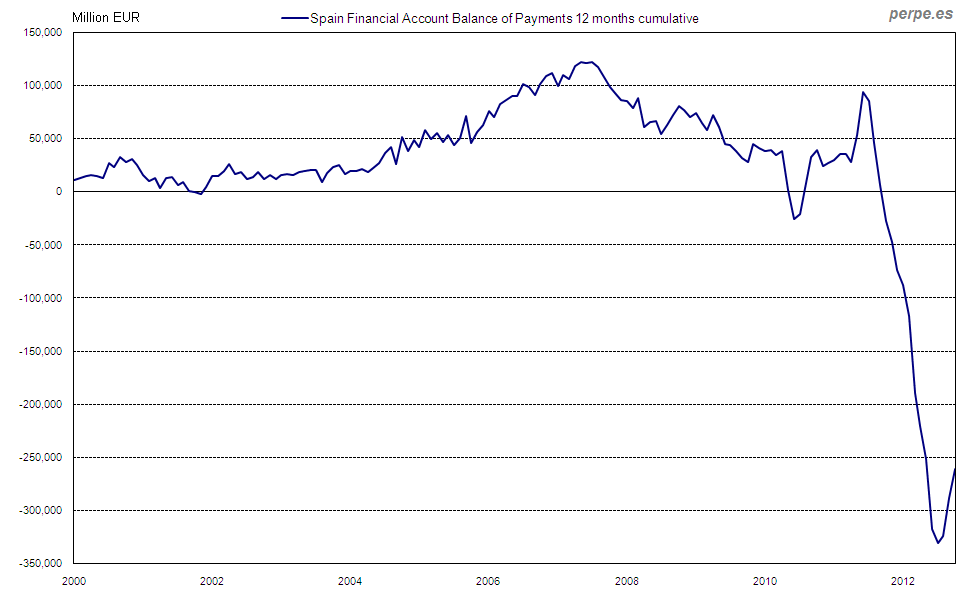
Chart 7. Financial account balance of payments
It is very difficult for banks to access financing under these circumstances, so the European Central Bank has been the responsible for providing liquidity to them. Although narrowing slightly, net lending to Spanish credit institutions still totaled 313,000 million euros. There were moments especially difficult in May of last year when Spanish loans represented 83% of the total Eurosystem, but now that figure is around 35%.
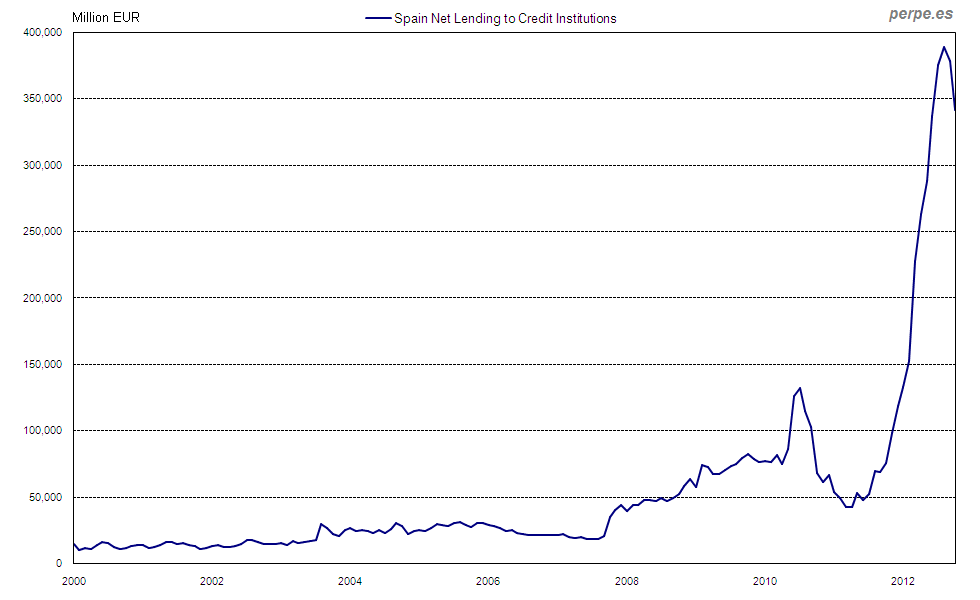
Chart 8. Net lending from European Central Bank to credit institutions
Despite efforts by the government to curb public expenditure, it is still 50% higher than the income. Some controversial tax increases, such as VAT, have not had a major collection effect.
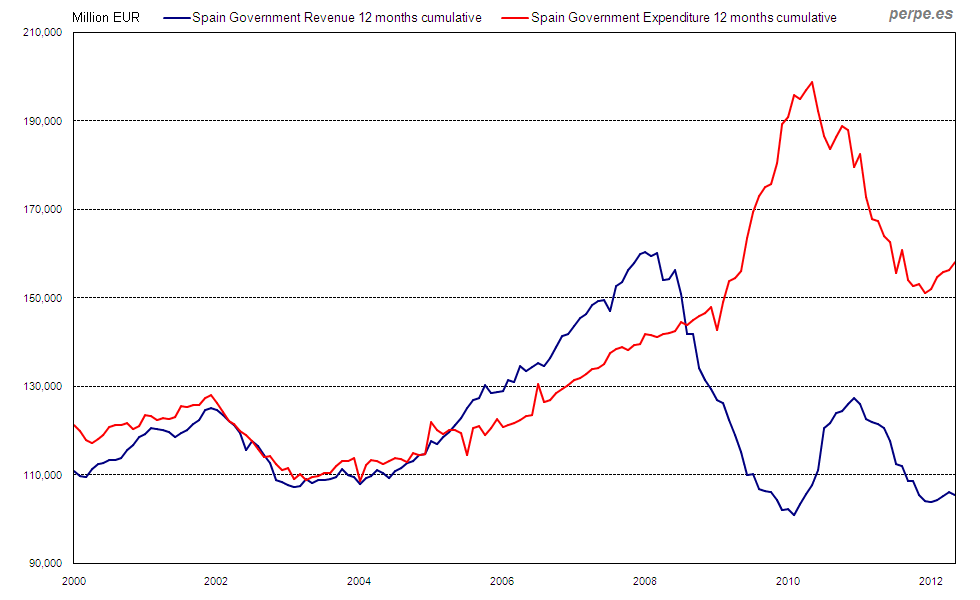
Chart 9. Government revenue and expenditure
To deal with these payments, the State has had to borrow heavily. The public debt, which remained steady at about 380,000 million euros on average between early 2000 and September 2008, soared to over 800,000 million, increasing from 35.4% of GDP to the current 77.4%.
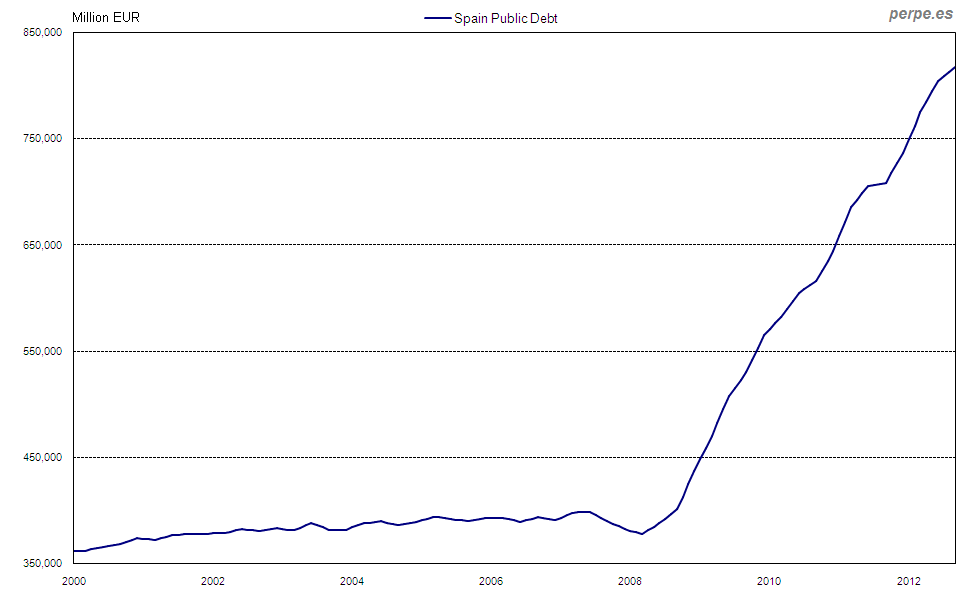 Chart 10. Public debt
Chart 10. Public debt
As expected, domestic demand has fallen considerably reducing imports. However, export growth continues in a good shape, in a way thanks to a decline in labor costs. Currently, exports represent approximately 21% of GDP.
One sector that seems to have followed the path of recovery has been tourism, which altogether represents around 10% of GDP. In the absence of the final results of last year, Spain likely continued to be the country with the second highest tourism receipts, with more than 43,000 million euros. In 2012, 57,700,000 international tourists visited the country, which is not far from the historic record set in 2007 of 58,666,000 visitors.
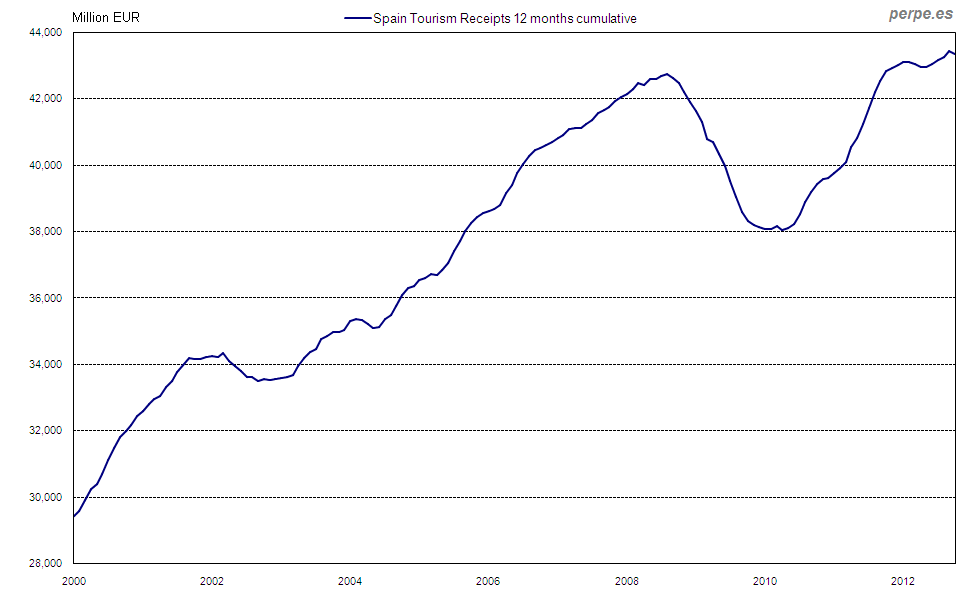 Chart 12. Tourism receipts
Chart 12. Tourism receipts
Of course there are many indicators that can be considered to have a more detailed view of the economy. Here I have tried to give an overview of those most relevant and referred almost daily.
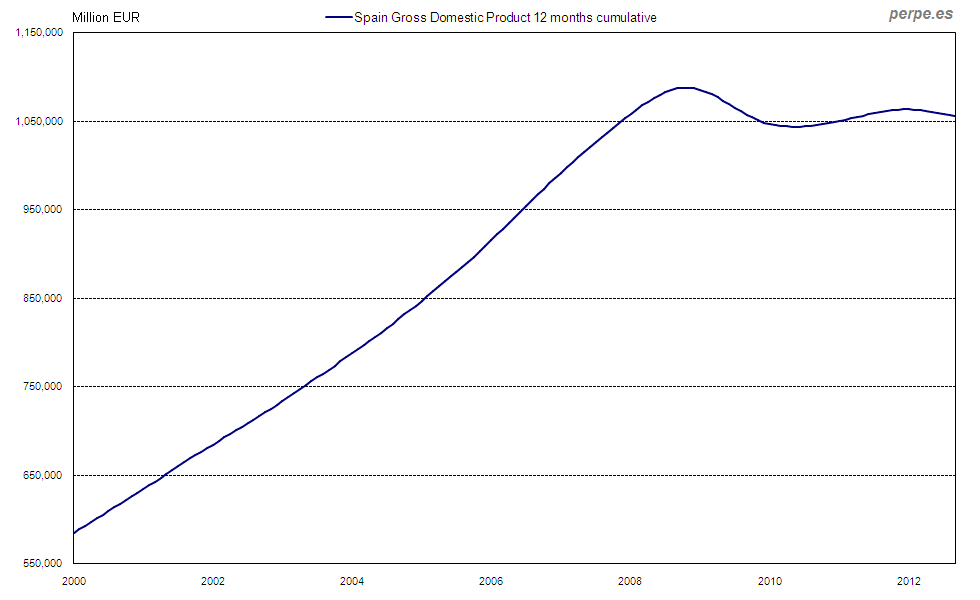
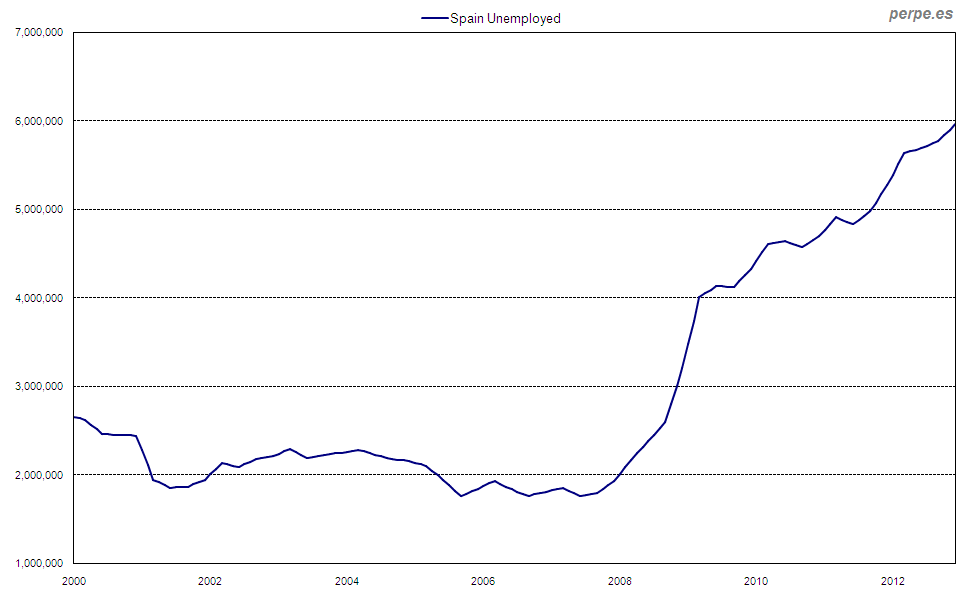
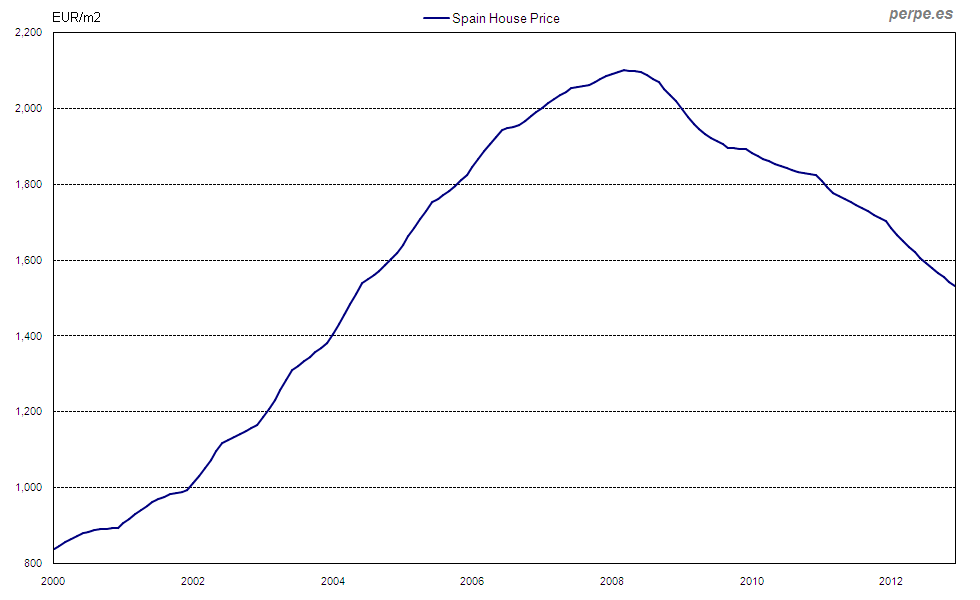
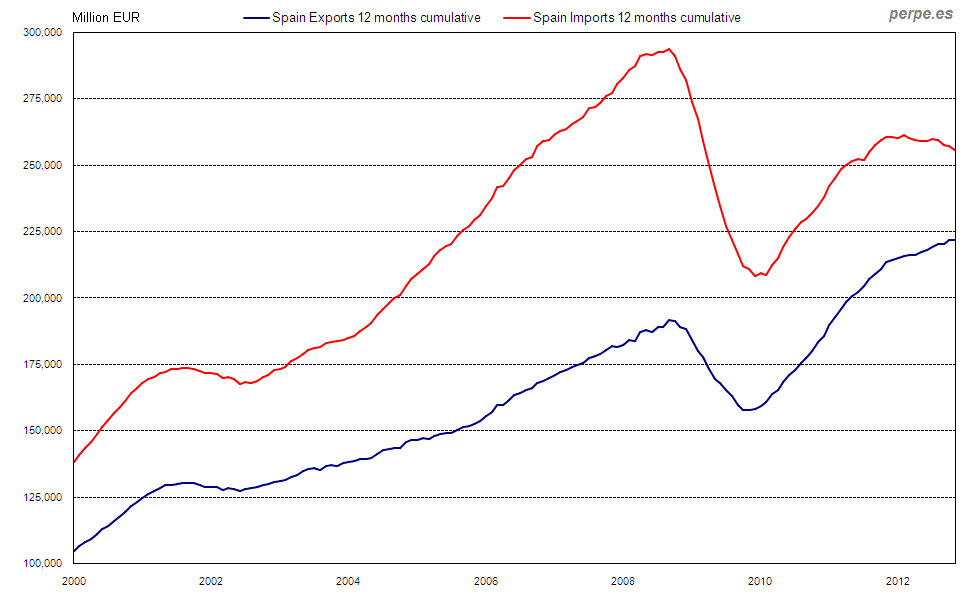
Hi Daniel!
I recently came across your blog and have found it to be very interesting. Some very educational posts regarding economics and energy. I will be having a look at your book too!
I was wondering if you would be interested in sharing your blog on Glipho? Glipho is a new social blogging network that aims to promote the writing of its users and help build their audiences. We are trying to establish a creative community at Glipho, and your blog is just what we are looking for.
As your blog is powered by Blogger, you can simply import all your old posts to Glipho without affecting your existing blog at all. You can use your Glipho account to connect to any other major social network accounts you may own, so you can spread your blog as far as possible. We also use our own social media accounts to promote your content.
If you’re interested check out our website at http://glipho.com and have a look around. Please feel free to ask me any questions, and if you would like to receive an invite to set up an account!
Have a great day,
Teo
Glipho Limited
14 Suite 3 D
Docklands Business Centre
10-16 Tiller Road
London E14 8PX
(e): teo@glipho.com
(w): http://www.glipho.com
I recently came across your blog and have been reading along. I thought I would leave my first
comment. I dont know what to say except that I have enjoyed reading. Nice blog.
I will keep visiting this blog very often.
flights to Umrah
cheap flight to jeddah
flights to jeddah
umrah jeddah flights
umrah flights from London
cheap flights to umrah
Saving moneyThank you a great deal with regard to expressing! Anyone deliver a great deal of valuable tips and advice. Economic planning is critical in addition to everybody ought to do the item – also start out while very young. But, it’s just as crucial that you learn that we now have solutions as soon as folks require funds rapidly for instance receiving. Saving time and Saving energy
Well every country’s govt has to bring up right ideas to keep the economy going high.
Tourism and Travel play an important role. As tourism is one of the biggest sources of employment generation and foreign exchange earnings for a country.